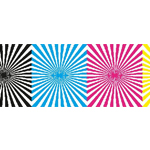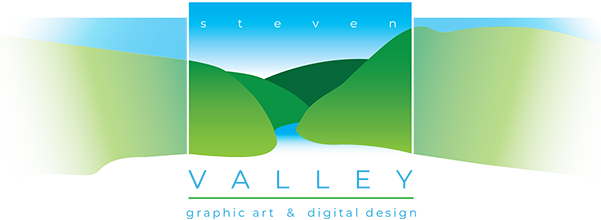What are those funny marks on the corners & side of my page?
Back in the day, meaning before the internet, the primary marketing dissemination tool was the printed piece. Creating them was costly, tedious, and expensive and not to be taken on lightly.
Why? Because it took a team of individuals utilizing several different mediums and processes to get a single piece out the door and circulating. From concept to completion the creation process was long and difficult and smack dab in the middle of that process was print production. Print production was accomplished with a dizzying array of arcane manual tools, forgotten nomenclature, and inflexible procedures. It took teams of anywhere form 12-20 people to get one piece done and into circulation. Fast forward to today where it takes 1 person to get 12-20 pieces out into use or circulation.
Print production was accomplished with a dizzying array of arcane manual tools, forgotten nomenclature, and inflexible procedures.
Much of the digital media production process was made easier, full color, motion, and sound with the advent of computers. Paper has lost its preeminence to the simpler and quicker production process that computers solved. Don’t get me wrong print still holds a place in the marketing process. Albeit a smaller one and one that has very specific circumstances for when it is deployed. Sales will still use direct mail, pamphlets, flyers, and print ads to generate awareness and then close the deal with brochures, slicks, and presentation decks in 3-ring binders. The way they’re created though is different and requires the creators know some specific lingo and specific symbols.
Much like why Qwerty keyboards still exist to this day, printers marks will always be with us, their past is very much their future. By that I mean, these symbols evolved over time to the form they are now and the print world around them has been taught and will be taught going forward what their significance is. So unless print goes away (which it won’t) printers marks are here to stay.
Here are the five most important printer marks you should know if you need to produce a printed piece, for the sake of discussion, these marks are the ones that show up when you click them on in Acrobat and create a PDF:
Printer Marks

Crop Marks
Are small lines offset from the edge of the finished piece that instruct where to cut or trim the final page to a finished size. These will not appear on the finished piece. You definitely need to click these on. There will be some default settings that decide how these marks look… their stroke weight and offset distance. As a general rule, do not change these defaults unless you know a specific reason to do so. Adding crop marks at this stage WILL INCREASE the dimension of your pdf – i.e., you have to have extra real estate on which to place the marks. It is helpful to stay aware of the final dimensions of your pdf.

Bleed (red)
A red line outside the crop marks, but instead of defining the finished cut size, they define the allotted bleed area of the document that go over the cut or trim edge. The bleed area this line define is itself part of the printed area. Note that just like adding crop marks, they increase the dimension of your eventual pdf even further, as it now must accommodate both the bleed area and the offset bleed area. With each set of marks you add, the dimension of the pdf increases.

Color Density
These sit outside the printed area and are used to correlate the different colors or plates used in offset lithography. Every type of printing uses a different, or many different, versions of the registration mark. My advice is to not include these marks or color bars unless your print provider prefers that you do. Your service provider will add onto their press sheet the type of mark they need in the location they need it. Commercial printers also use these boxes of colors to maintain the correct density during the print run so that the crispness of the printed forms on the paper are maintained throughout the run.
Registration marks:

Registration
These target like marks print outside the trim area. They include bulls-eye targets, crop marks, plate information, etc. These marks allow the printer to accurately align separate letterpress plates for multiple color print jobs and better align cuts when trimming. They are also used in any kind of specialty printing like embossing, foil stamps, 6th 7th 8th colors and provide a black density target as well when a special type of “center” mark is used.
Live Area:

Live area (blue)
The area inside the cut or trim area that is guaranteed to print and not be lost. Set to a quarter inch (.25”) and has now come to be known as the gripper area on laser printers
.
Slug Area: Slug area is EVERYTHING outside the finished edge – this includes the defined bleed area and beyond. Crop marks and bleed area both live within the Slug area. Defines a larger area that will include the registration marks, color bars, and any other information the printer should see. But that will be cut off from the finished piece. If you do not define a slug area, Acrobat will simply add on the space needed to hold the marks. And any instructions you have already specified, or it will use the bleed area you defined as your slug area.
So, now you’ll know what all those lines and marks mean when you send a PDF to the printer. Without them your piece would be difficult if not down right impossible to print.



